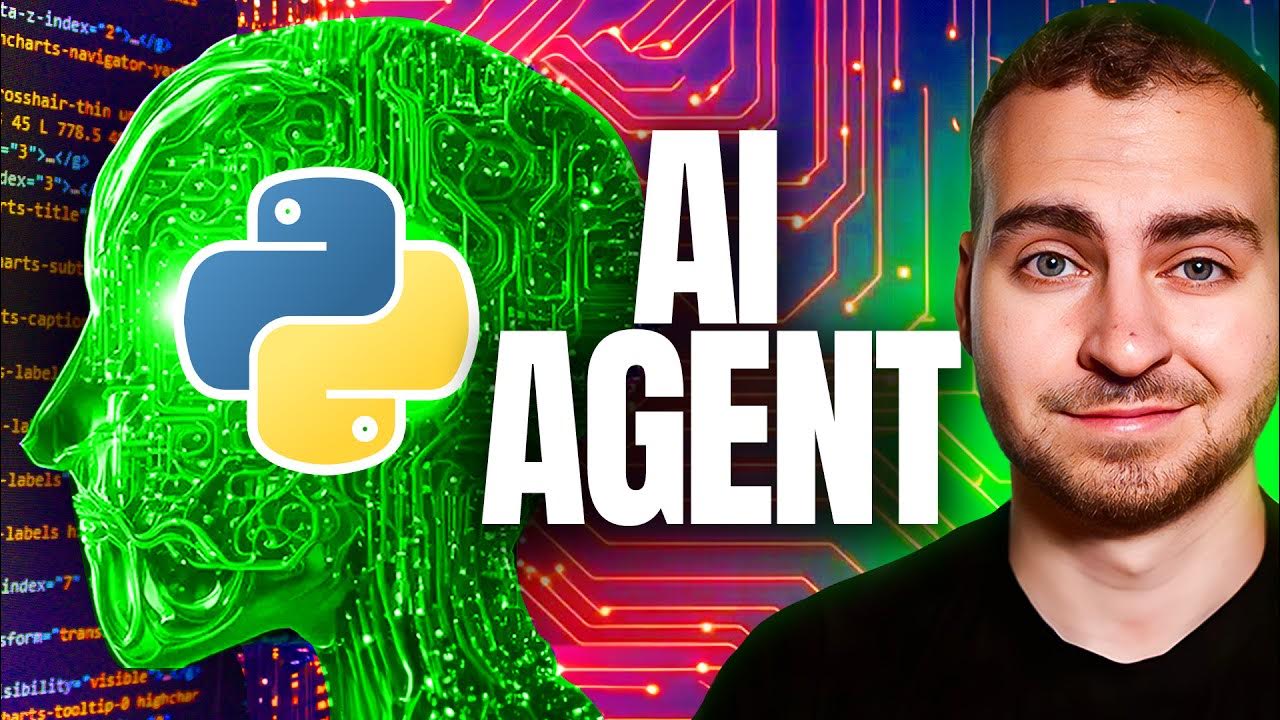LangChain Explained in 13 Minutes | QuickStart Tutorial for Beginners
Summary
TLDRLangChain是一个开源框架,它允许开发者将大型语言模型如GPT-4与外部计算和数据源结合使用。这个框架特别在2023年3月GPT-4发布后变得流行。LangChain通过将文档分割成小块并存储在向量数据库中,使得语言模型能够引用整个数据库中的数据。这样,用户可以构建既能够引用个人数据又能执行操作(如发送电子邮件)的应用程序。LangChain的核心概念包括LLM包装器、提示模板、索引、链和代理。它支持开发者通过编写代码来构建应用程序,这些应用程序能够动态地根据用户输入变化提示,并执行复杂的任务,如解析文本、执行相似性搜索和与外部API交互。
Takeaways
- 📚 **链 (LangChain) 是一个开源框架,允许开发者将大型语言模型(如 GPT-4)与外部计算和数据源结合使用。
- 🚀 链的流行度在 GPT-4 于 2023 年 3 月发布后迅速上升,特别是因为它能够处理大量数据和执行复杂任务。
- 🔗 链允许将大型语言模型连接到个人数据源,如书籍、PDF 文件、含有专有信息的数据库等。
- 📈 链通过将文档分割成小块并存储在向量数据库中,以嵌入(向量表示)的形式,帮助构建能够执行通用流程的语言模型应用程序。
- 🤖 链帮助构建的数据感知且能够执行操作的应用程序,可以用于个人助理、学习、编码、数据分析等多个领域。
- 🔑 链的主要价值主张可以概括为三个概念:LLM 包装器、提示模板、索引、链和代理。
- 🛠️ LLM 包装器允许连接到大型语言模型,提示模板避免了硬编码文本,索引用于提取信息,链用于组合多个组件解决特定任务。
- 🧲 链使用 Pinecone 作为向量存储,可以将文本分割成小块,并通过 OpenAI 的嵌入模型 Ada 将文本转换为向量表示。
- 🔍 在 Pinecone 中存储向量后,可以进行相似性搜索以获取问题的答案或提取所有相关块。
- 📝 链还允许使用 Python 代码解释器,使语言模型能够运行 Python 代码,执行如求解二次函数根等计算任务。
- 🌐 链框架不断更新,提供了模型或模型包装器、问题、链、嵌入和向量存储以及代理等元素的高层次概览。
- 📈 链的应用程序可以连接到公司数据,如客户数据、市场营销数据等,预示着数据分析和数据科学领域将取得指数级进步。
Q & A
什么是LangChain?
-LangChain是一个开源框架,允许开发者将大型语言模型(如GPT-4)与外部计算和数据源结合起来使用。它提供了Python和JavaScript(具体是TypeScript)的包。
LangChain为什么特别有用?
-LangChain允许将大型语言模型连接到个人数据源,如数据库,并且能够执行基于检索信息的操作,如发送电子邮件,这使得它在数据感知和执行操作方面非常有用。
LangChain如何与GPT-4等大型语言模型配合使用?
-通过将数据分割成小块并存储为向量(即嵌入),LangChain可以构建一个向量数据库,使用户能够通过相似性搜索检索相关信息,并将这些信息提供给语言模型以生成答案或执行操作。
LangChain的主要价值主张是什么?
-LangChain的主要价值主张可以概括为三个概念:LLM包装器(连接大型语言模型)、提示模板(避免硬编码文本)、索引(提取LLM的相关信息)、链(组合多个组件以解决特定任务)、代理(允许LLM与外部API交互)。
如何使用LangChain构建应用程序?
-使用LangChain构建应用程序通常遵循一个管道:用户提出问题,问题发送到语言模型,然后使用问题的向量表示在向量数据库中进行相似性搜索,检索相关信息并将其提供给语言模型,从而生成答案或执行操作。
LangChain中的“链”是什么?
-在LangChain中,链是将语言模型和提示模板结合起来的接口,它接受用户的输入并从语言模型输出答案,类似于一个复合函数,其中内部函数是提示模板,外部函数是语言模型。
如何使用LangChain处理和存储文本数据?
-首先,使用文本分割器将文本分割成小块,然后使用OpenAI的嵌入模型(如Ada)将文本转换为向量表示,并将这些向量存储在Pinecone这样的向量存储库中。
LangChain中的代理有什么作用?
-LangChain中的代理允许大型语言模型与外部API交互,执行如运行Python代码、查找二次函数的根等操作,这增加了应用程序的功能和灵活性。
LangChain如何帮助数据科学和数据分析?
-LangChain能够连接大型语言模型到现有的公司数据,如客户数据、市场数据等,这有助于在数据科学和数据分析领域实现指数级的进步。
LangChain的提示模板是如何工作的?
-提示模板允许将用户输入注入到一段文本中,然后格式化提示并将其提供给语言模型,使得提示可以动态地根据用户输入变化。
LangChain是否支持与第三方API的集成?
-是的,LangChain支持与第三方API的集成,例如通过代理功能允许语言模型执行调用外部服务的操作,如使用OpenAI的Python代码解释器。
Outlines

此内容仅限付费用户访问。 请升级后访问。
立即升级Mindmap

此内容仅限付费用户访问。 请升级后访问。
立即升级Keywords

此内容仅限付费用户访问。 请升级后访问。
立即升级Highlights

此内容仅限付费用户访问。 请升级后访问。
立即升级Transcripts

此内容仅限付费用户访问。 请升级后访问。
立即升级浏览更多相关视频

Ilya Sutskever (OpenAI Chief Scientist) on Open Source vs Closed AI Models

Introducing FunctionGemma

New HYBRID AI Model Just SHOCKED The Open-Source World - JAMBA 1.5

How to use Microsoft Azure AI Studio and Azure OpenAI models

Understand DSPy: Programming AI Pipelines

Optimization of LLM Systems with DSPy and LangChain/LangSmith

Python Advanced AI Agent Tutorial - LlamaIndex, Ollama and Multi-LLM!
5.0 / 5 (0 votes)